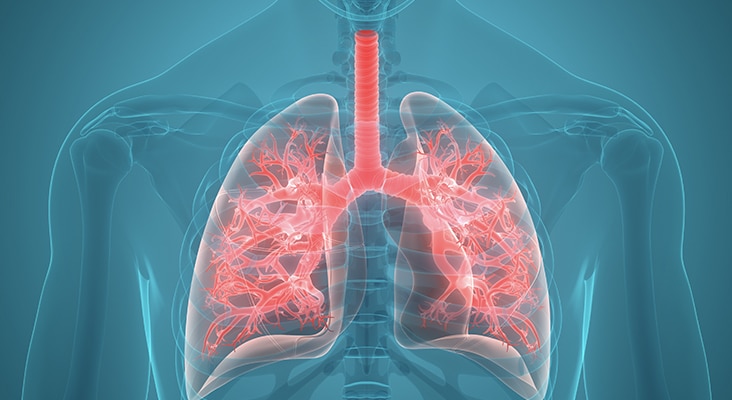Assessing Caries Risk in Kids With Special Needs
Not all children with special health care needs are at high risk of caries, and prevention programs should be tailored to individual risk factors.

Oral Health and Kids With Special Needs
Not all children with special health care needs are at high risk of caries, and prevention programs should be tailored to individual risk factors. Attention to the patient’s need for a cariogenic diet, use of medications that may be dosed in sugary suspensions or cause xerostomia, inability to maintain optimal oral hygiene, decreased salivary buffering capacity, and other condition-specific caries risk factors can help providers identify successful prevention strategies.
Photo Credit: adamkaz / E+

Ear, Nose, and Throat
Given their physical proximity to the oral cavity, conditions affecting the ear, nose, and throat may significantly affect caries risk. Physical challenges for children with special health care needs, such as decreased nasal passages in individuals with craniosynostosis, may increase the chance of typical childhood infections, including sinusitis or otitis media. They can also exacerbate conditions such as obstructive sleep apnea.
Photo Credit: hakule / DigitalVision Vectors

Respiratory Issues
Children frequently experience acute respiratory diseases, but chronic respiratory conditions, such as asthma, cystic fibrosis, and allergic rhinitis, may alter the caries risk profile. Xerostomia is a common side effect of respiratory drug therapies that reduce buffering capacity and remineralization ability, leading to elevated caries risk. Many individuals with chronic respiratory conditions also experience severe gastroesophageal reflux disease, and the resulting acid regurgitation can erode tooth enamel.
Photo Credit: magicmine / iStock / Getty Images Plus

Gastrointestinal Problems
Common pediatric chronic gastrointestinal conditions that impact caries risk include GERD and celiac disease. These are associated with high levels of acid erosion and enamel defects, which weaken the outer tooth layer, leaving it susceptible to caries lesions. In one study, children with celiac disease demonstrated a higher prevalence of enamel defects compared with matched healthy controls, and presence of enamel defects in both groups was positively associated with caries experience.
Photo Credit: Andrii Zastrozhnov / iStock / Getty Images Plus

Kidney Diseases
Advances in pediatric nephrology have resulted in increased survival for children with acquired or congenital renal disorders. Despite the need for a carbohydrate-rich, protein-sparing diet, children with chronic kidney disease have dramatically lower reported caries prevalence when compared with healthy controls. This is almost certainly due to an increased total body pH that results in increased salivary buffering capacity, which, in turn, promotes enamel remineralization.
Photo Credit: peterschreiber.media / iStock / Getty Images Plus

Problems With the Nervous System
Epilepsy, the most common nervous system disorder in children, affects 1% to 3% of the US pediatric population. Reported caries prevalence in this cohort is high, and may be due to poor oral hygiene and frequent use of antiepileptic medications. Children with epilepsy often have concomitant intellectual and motor disabilities that make oral hygiene difficult. In one study, when compared to healthy controls children with epilepsy had significantly higher caries experience, brushed their teeth less often, and had worse self-rating of their oral health. In addition, common antiepileptic mediations, such as phenytoin, can cause gingival overgrowth that also makes oral hygiene challenging; although its etiology is poorly understood and likely multifactorial, optimal oral hygiene can reduce side effects.
Photo Credit: undefined undefined / iStock / Getty Images Plus

Musculoskeletal Disorders
Chronic musculoskeletal conditions, such as cerebral palsy, Duchene’s muscular dystrophy, and scoliosis, may result in lifelong impaired mobility. This decrease in range of motion and dexterity often makes oral hygiene difficult, which can increase caries risk. Studies of individuals with Duchene’s muscular dystrophy and myotonic dystrophy type 1 corroborate that decreasing muscle function is associated with increased plaque and calculus accumulation. Caries experience, however, has been variable in these populations. In addition to receiving assistance with self-care, the use of specialized toothbrushes that are easy to grasp or power toothbrushes is important because dental care under general anesthesia with inhaled anesthetics is contraindicated due to the increased risk for developing malignant hyperthermia.
Photo Credit: RyanJLane / E+

Blood Disorders
Disorders of the blood in children are characterized as: red cell (anemia, thalassemia, sickle cell disease); white cell (chronic granulomatous disease, leukocyte adhesion deficiency, cyclic neutropenia, severe congenital neutropenia/Kostmann syndrome); failures of the bone marrow (leukemia, aplastic anemia, Fanconi anemia, congenital amegakaryocytic thrombocytopenia); bleeding disorders (hemophilia, von Willebrand disease, thrombocytopenia); and autoimmune conditions (immune thrombocytopenia, Evans syndrome). Acquired hematologic conditions, such as iron deficient anemia, have been associated with severe early childhood caries, but this is thought to result from malnutrition stemming from the poor dentition. Studies on genetic hematologic conditions, such as sickle cell disease or thalassemia, show that other known caries risk factors (diet or oral hygiene) have more influence than the underlying disease condition. Moreover, a study of children with hemophilia showed they had lower caries experience than healthy controls, and multivariate modeling confirmed that hemophilia status was not a risk factor beyond other known caries risk determinants.
Photo Credit: ismagilov / iStock / Getty Images Plus

Metabolic Disorders
Endocrine and resulting metabolic conditions in children include diabetes mellitus, metabolic disorders, and thyroid gland problems. Although periodontitis as a complication of type 1 diabetes has been studied extensively, the reported caries experience of these patients has been inconsistent. Increased risk factors include decreased salivary flow, poor oral hygiene, and poor metabolic control, resulting in increased salivary glucose levels.
Photo Credit: adrian825 / iStock / Getty Images Plus

Psychiatric Problems
Children can experience mental health issues, including attention deficit hyperactivity disorder, autism spectrum disorder, anxiety, depression, bipolar disorder, schizophrenia, or eating disorders. Some may have a dual diagnosis of an intellectual disability. In this diverse population, use of xerostomia-inducing medications, restrictive diets, and challenging behaviors can increase caries risk. Pharmacologic treatment may includes antipsychotic and antidepressant medications, whose anticholinergic effects cause xerostomia. While this does not appear to be solely responsible for the increased caries experience of this population, it may synergistically influence other risk factors.

